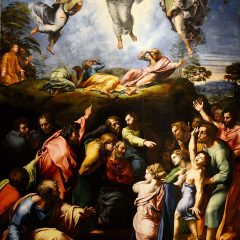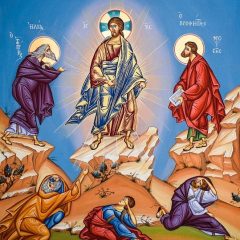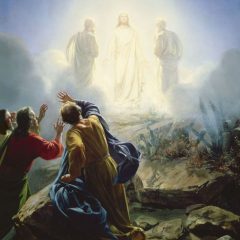transfiguration
You Have To Look Where You’re Going
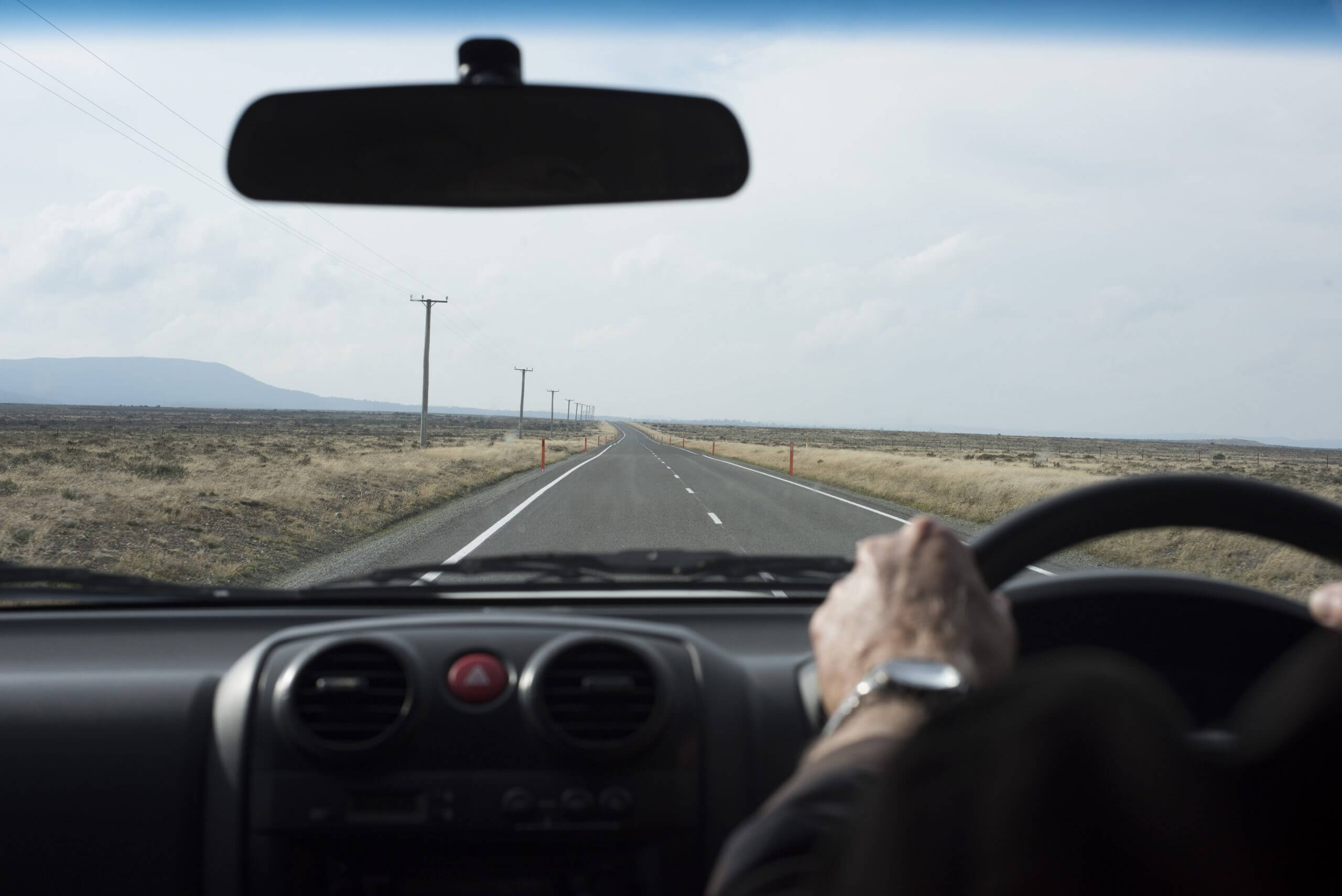
2nd Sunday of Lent
Deacon Tom Vert
Preached: February 25, 2024
You have to look where you are going!
How many people here have taught their children, grandchildren, or others how to drive a car?
One of the first lessons to learn is that you need to look where you are going! If you look straight ahead far down the road, you will drive straight ahead. If you start to look towards the left or right, or at a truck, you will naturally drift that way, subconsciously you can’t help it. This puts you and the car in danger.
Looking where you are going is one of the keys to driving safely.
In the spiritual life, looking where you are going is also critical to staying on the spiritual path, and in my opinion, one of the key reasons for the transfiguration. Jesus knew that his time was coming to an end, he was nearing Jerusalem, and his passion and death were coming close. But also, his resurrection would be coming, and he needed Peter, James, and John, to focus on that truth, focus on that vision of what would happen in order to help get them through the challenges after the crucifixion.
This experience of seeing Jesus’ figure transformed with dazzling white bright energy and the voice of God coming down to say “this is my beloved Son, listen to him”, were key moments that they could anchor on to in their absolute grief after his death.
This moment enhanced their faith even more, just like the moment we saw for Abraham in the first reading. We see Abraham passes this test of faith of offering up his son Isaac, because he already had a close relationship with God who had proven time and again how much he loved Abraham.
Abraham had the history of God supporting him as he moved out of his homeland in Babylon to Israel. He had the focus of the three angels visiting him in the tent and the gift of God of his son Isaac, born to Sarah in her very old age. This knowledge in his heart, this focus, of a loving, caring God allowed him to go through this test, this struggle, with faith in his heart and get even closer to God.
This close relationship, this vision of where we are going is emphasized by St. Paul also in the second reading. He tells the Romans (and us), If God is for us, who can be against us?
In other words, if God is at the centre of our lives, and we have this focus that he has promised us his presence now and in eternal life, then how can we let the distractions of everyday live, the stresses make us look to the side and go off of the spiritual path?
In the verses immediately after today’s readings, Paul makes it crystal clear to all of us when he says: “Who will separate us from the love of Christ? Will hardship, or distress, or persecution, or famine, or nakedness, or peril, or sword?
“For I am convinced that neither death, nor life, nor angels, nor rulers, nor things present, or things to come, nor powers, nor height, nor depth, nor anything else in all creation, will be able to separate us from the love of God in Christ Jesus our Lord”.
This love of Christ, that shines forth so bright that we can’t even look at it is available to us each and every day. It is not something that only happened 2000 years ago, but it is offered to us here and now.
I love how our new church has this symbolically for us to see! Look at the rays that shine forth around Jesus, in a way, transforming the image to show God’s love shining towards us. It is a great reminder of the transfiguration and this symbol of God showing us the way!
God we are told, did not spare his only Son, as he desires to be in a loving relationship with us! His arms are open for us to enter and be close to him!
So how do we put this knowledge to use in our daily spiritual life?
When the storms of life come, the diagnosis of cancer, the loss of a loved one, the failed relationship, or the job stresses, then come to this church during the day, before or after mass, whenever you need to and look directly at our crucified Jesus with the light surrounding him, and say to yourself “You have to look where you are going!”
As White As Snow

Transfiguration Of The Lord
Fr. Peter Robinson
Preached: August 6, 2023
We have all heard the mantra used in real estate, when buying or selling a house: “Location,
location, and … location.” Did you know that this principle is equally important when studying a
Bible passage? Except the mantra is: “Context, context, context.”
I say that, because just before our Old Testament reading from the Prophet Daniel, the author
introduces 4 horrible beasts. These are the sorts of creatures that we would expect to see in a
sci-fi film, or a horror movie. Daniel uses these images to depict 4 ancient empires – and, at the
same time, these monsters are also metaphors.
For example, by a careful study of history, scholars know that the 4 monsters (which look like a lion, a bear, a leopard, and a fourth terrifying beast) represent the ancient kingdoms of Babylon, Media, Persia, and Greece. Yet these terrifying beasts also depict the forces of evil, that (age after age) wage war on God’s kingdom, and on his people.
Which brings us back to today’s First Reading. You see, there are monsters at loose in our age,
too. There are systems of though (or ideologies) at work in our society — intent on extinguishing our faith (yours and mine) and our Church. Yet consider the One who protects us. Daniel gazes deep into heaven and describes our Protector in vivid detail.
Thrones are set in place, and one called the “Ancient of Days” takes his throne above all. (This is
Jesus Christ, King of kings and Lord of lords.) His clothes were the purest white, as white as
snow. And the hair of his head is like the finest wool (i.e., white hair in the Ancient Near East
symbolized maturity and wisdom). His throne is a flaming fire, and a stream of fire emerges and
flows from his presence. Around about, millions upon millions of heavenly beings are there to
serve HIM. Then the books of God’s judgment are opened by HIM.
In summary, this prophecy of Daniel was written during dark days of persecution of Judaism, a
couple of centuries before Christ. From the point of view of the Jewish people, ravening beasts
were indeed tearing them like prey to pieces. And yet, from God’s perspective a noble human
being takes his throne, on whom God confers all power and sovereignty on earth. This noble
leader is given the title “son of man.”
Did you know that this is the only title which Jesus uses of himself, during his 3 years of ministry, the title “son of man”? So, there is no doubt to whom the prophecy of Daniel refers. When Jesus is transfigured on a low mountain in Palestine, his robe becomes “as white as snow.” For Peter, James, and John this could only recall the scene written by Daniel centuries earlier.
Therefore, brothers and sisters, regardless of the challenges coming hard at you this week, this month, this year, obstacles that may seem insurmountable, I want you to remember this: “The kingship and dominion and majesty of all the kingdoms under the heavens” have already been given to Jesus, the Most High (v 27).
Today, our Church around the world celebrates the Transfiguration of the Lord. We affirm that our spiritual Lord, King Jesus, is the true ruler of this planet, and of the cosmos. If we are faithful to him, we too will rule in glory with him — in his eternal kingdom.
Go Up A Mountain With Jesus
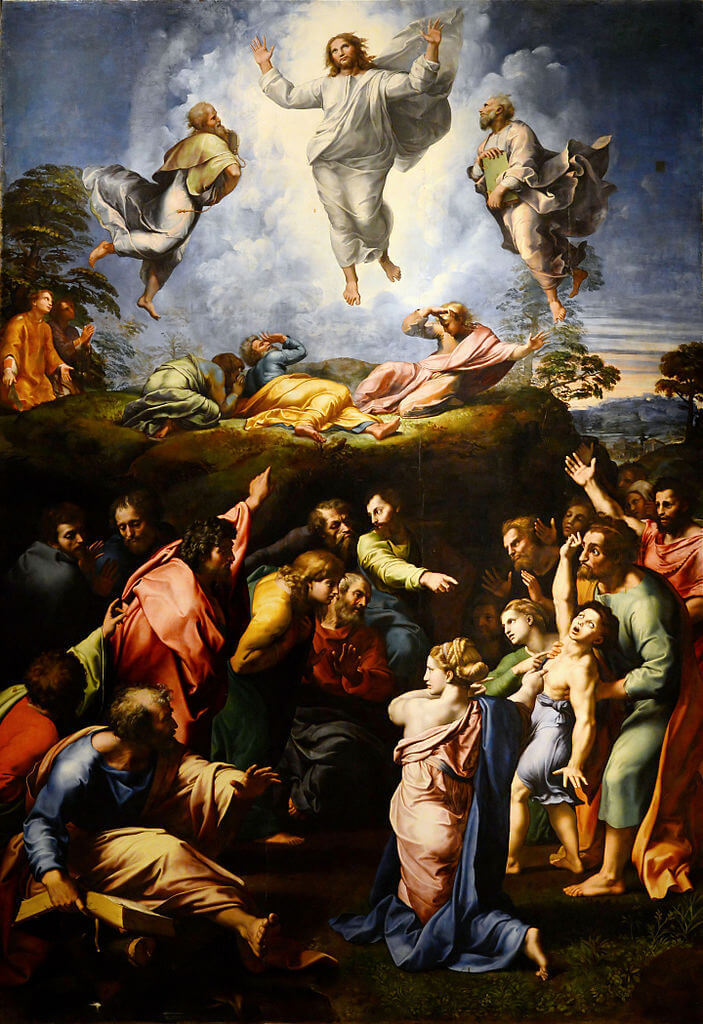
Second Sunday of Lent
Fr. Mark Gatto
Preached: March 13, 2022
Where do you like to pray? Do you have a favourite place to pray?
Jesus took Peter, James and John up on the mountain. Away from the distractions and noise of daily life. A time and place of solitude and silence. This allowed them to see in a new way. They saw and understood Jesus in a deeper way, in a new way.
It seems such a wonderful thing for those apostles who were taken up the mountain with Jesus. We would love to be taken up a mountain to be alone with Jesus. Yet, each day there is an opportunity for us to go with Jesus up the mountain. A place of quiet, a place of solitude, a place of prayer. For some, perhaps in our bedroom, for some, perhaps in our sitting room, for some, perhaps in a local church, for some, perhaps out for a walk. Go with Jesus up the mountain now and then in order to see more clearly.
But, I wonder how many of us would actually go with Jesus. Many of us would be too busy, too distracted, too many things to worry about.
In our new church building, my hope is to provide a place of prayer for us all. The church itself is designed to allow all of us the baptized to gather and worship as the living body of Christ. That all of us will fully participate in the Liturgy.
Within the church we will also have two shrines. One dedicated to the Holy Family and one dedicated to St. Catherine of Siena. These will be places for our more private time of prayer. Especially the prayer of Intercession where many will take time to pray for family, for friends, for the needs of the world, as well as for their own times of personal discernment.
We will also have an Adoration Chapel, the Corpus Christi Adoration Chapel, which will be a place of private prayer time in the presence of the Blessed Sacrament.
Finally, we will have in the main walkway of the parking lot a Grotto. The Our Lady of Lourdes Grotto with a statue of Our Lady. I am sure that many will drive in and park near there for quiet moments of reflection.
Hopefully, all of these places in our new church will allow Jesus to take us up a mountain to see more clearly with times of solitude, silence and prayer.
Prayer is so important, but it is not an escape from the world. It is not a moment to avoid responsibility. Peter’s reaction was to want to build tents and stay up the mountain, it was such a nice experience. But, staying in that experience of prayer was not the goal. They had to go back down and continue on their journey, continue on their mission. They had to still face suffering, fear, evil in the crucifixion and death of Jesus.
Our prayer is not to be escapism. It is not to avoid responsibility. The escaped slave Frederick Douglass once said, “I prayed for twenty years but received no answer until I prayed with my legs.” Our praying for something is not meant to avoid doing anything about it ourselves. Prayer is not a magical thing to get what we want, it is not an escape from my personal responsibility. When we pray for something we should always see more clearly what I am called to do in that situation.
An example is when we have a sick family member or friend. We may pray for their healing. But that prayer should also help us to see our own call to assist and support that person. Our prayer may give us the strength and peace to face the pain of seeing someone we love suffering. Our prayer may help us to see how we are to walk with this person even as they face death.
I recently read something from St. John Chrysostom about the importance of prayer. But, he emphasized that he did not mean just saying words or prayer of outward observance. It is prayer from the heart that is not confined to fixed times or periods. Continuous throughout the day and night. Our spirit and mind reaching out, longing for God.
Not just when in formal prayer but also when we are carrying out our daily duties. While at work, while caring for a family member who is sick or needy. Throughout the day to reach out to God as a child longing to be tenderly embraced. Turn to God with our heart before all that we do. In this way we will become a dwelling place for God.
So, let Jesus take you up a mountain by finding places and times of silence and solitude. Go to your favourite place of prayer. Not as an escape from the world nor to avoid our own responsibility. In all that we do in our ordinary daily lives, have prayer of the heart, continually turning to God. Then, in each person we meet, in each thing we do during the day, we will see with the light of God, we will have the spirit of God within us that allows God to touch others through us.
Discerning The True Will Of God

2nd Sunday Of Lent – Year B
Fr. Mark Gatto
Date Preached: Februay 28, 2021
What we think God wants is not always what God actually wants. We need to be very careful in thinking that we know what God wills. We need to be humble and discern carefully. Because in history there have been many times that in the name of religion or in the name of God, people have done very terrible things. There is a saying that most people have just enough religion to hate and not enough religion to love.
The story of Abraham and Isaac is an example of how it is possible to misunderstand what God wills. Abraham is told to sacrifice his only son Isaac. Was this ever the actual will of God? Surely not. Though there were certain tribes and groups in that area of the world at that time who did sacrifice human beings in the name of God, as a form of worship. Abraham comes to a new understanding, a development in his discernment of God’s will. Abraham is known as the father of faith, he was ready to surrender everything for the will of God. But, he came to understand in a deeper way the will of God. Certainly not a God of senseless sacrifices or human suffering in God’s name.
The Transfiguration was a spiritual experience that would allow the disciples, Peter, James, John to trust when the crucifixion and death of Jesus took place. The Transfiguration would allow them to see beyond the surface of this terrible event. In fact, they probably only understood the meaning of this Transfiguration experience later on, some time after the death and resurrection of Jesus.
All of us need Transfiguration like experiences to allow us to discern more carefully the true will of God. To allow us to see beyond the surface of the events and circumstances of our life. When we experience struggles, failures, suffering and ultimately the reality of death, we need to see deeper, below the surface, to the will of God.
A Transfiguration experience may be when we spend time alone with God, away from the distractions of daily life. A time of silence, solitude and prayer. This opens our hearts and minds to see below the surface of the events in our life. This is so important if we are to understand in a deeper way when we experience struggles in life. Then we are able to recognize God calling us to get back up, not to give in to despair. To see the light beyond the dark moment. Of course, the ultimate darkness is the reality of death. But, the will of God is for our salvation, offering us new life in the resurrection.
Pope Francis, in his new book called Let Us Dream, reflects on what this Covid crisis means to us today and how we can move forward in a new and better way after this. In it he speaks about how the church needs to discern the “signs of the times”, to see how the Spirit is at work in our world. We have to interpret and pray over the events in our lives in the light of the Gospel. We should all be reflecting and praying over our experience in this Covid time. What can we learn from this, what grace is offered in this moment, how is God calling us to respond in this unique situation?
Often what we think is the will of God, what we think God wants, is not the will of God at all. We need to discern carefully and humbly. We need to go up the mountain in silence and solitude to allow God to open our hearts and minds. There we will be able to see more clearly the surprising and unexpected ways of God. We will be able to see even in the dark moments of our lives, the blessings that God desires for us.
Seeing Grace In The Ordinary
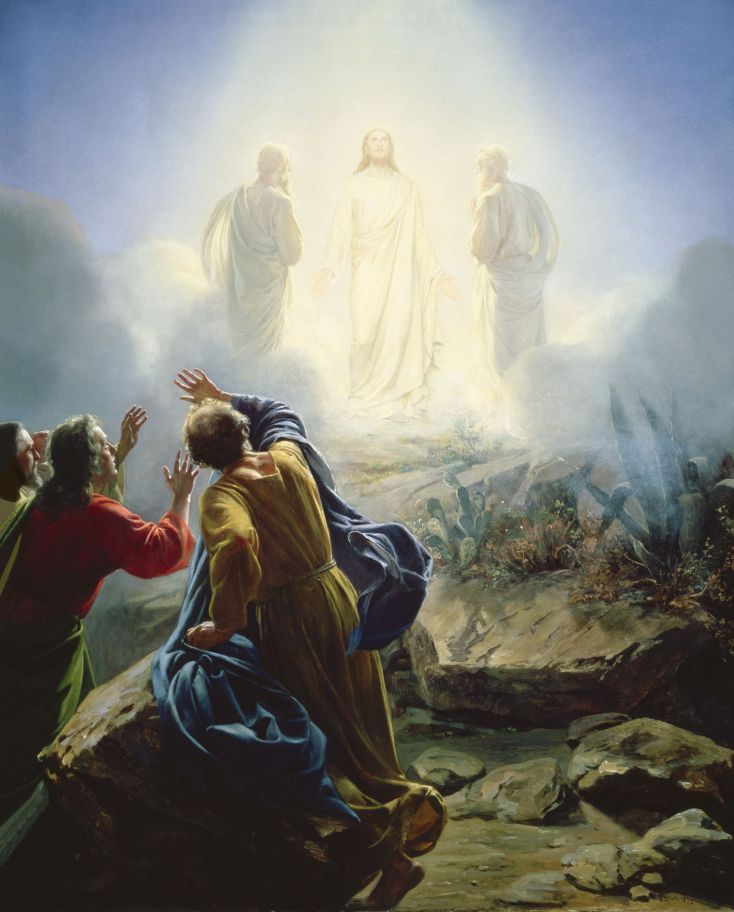
Second Sunday of Lent
Fr. Mark Gatto
Preached: March 17, 2019
The great test of our Catholic Faith is not that we can perform miracles or healings. The great test is that we have a sense of wonder and awe, that we are able to see grace in the most ordinary places. Are we able to recognize grace in ordinary places, people, moments?
We just heard the story of the Transfiguration. Peter, James and John on that mountain with Jesus see his glory, recognize the deeper meaning of Jesus, see the inner reality of Jesus as Son of the Father. Important in this story is to remember that Jesus was fully human like us. He looked like us, someone meeting or seeing him would see a human being like any other. Jesus was a completely ordinary human being. There would be nothing extraordinary just looking at him.
But, in the Transfiguration experience, Peter and James and John see something more, they
recognize the glory of Jesus, saw the divine reality present in their midst. In this ordinary human being, they were able to see with wonder the grace present in Jesus.
The four Gospels that we have are not primarily historical accounts. They are faith accounts and anything expressed in the Gospels is meant to become real in our lives as well. If the Gospels are not lived in our lives then they simply become dead letters.
So, the important question is not, “did the Transfiguration happen?” nor the question “what happened there?” The more important question for us is, “where and how do I experience the Transfiguration today in my life?”
Where do we see grace in the ordinary, where do we see beyond the ordinary to a deeper mean-ing? Are we able to see with eyes of wonder, to see the grace in the ordinary things, places and people in our life?
Marriage. One of the difficulties for some newly married couples is that they have false expectations. So, they are unable to see the grace and goodness in their very ordinary spouse and very ordinary marriage. Sometimes people struggle because their marriage is too ordinary, their spouse is too ordinary. The challenge is to be able to see with the eyes of wonder, to recognize grace in that very ordinary spouse, grace in your very ordinary marriage.
Same challenge exists for many new priests. They come out all excited, but most people they serve are very ordinary and the parish they serve is very ordinary. The challenge for a priest is to see with the eyes of wonder, to see the grace in the ordinary people they serve, see the grace in the ordinary parish they are in.
Another place we need to see with the eyes of wonder is when we look to the poor, the home-less, the sick. At first sight we might only see that they are rough, dirty, smelly. Are we able to see the grace below that surface? To recognize even the presence of Christ in the poor and needy?
Seeing with eyes of wonder, the grace in the ordinary is our Catholic Sacramental vision. This Catholic Sacramental Vision is experienced in the Sacraments. In very ordinary things we see something greater.
In the Eucharist, very ordinary bread and wine becomes the presence of Christ. In ordinary bread we see deeper to the grace of real presence. What we experience in the Sacraments lead us out to see God’s grace in the ordinary of creation, the ordinary of the people in our lives.
This is the test of our Catholic faith, to see with the eyes of wonder. To see the grace in the ordinary events, the ordinary people, the ordinary things, the ordinary places in our life. When we are able to see this grace in the ordinary, then the Transfiguration becomes something we experience today.
Learn To Let Go – Fr. Mark

Second Sunday of Lent – Year B
Fr. Mark Gatto
Preached: Feb 25 2018
One parishioner, give balls to hold in hands, Throw coin to be caught. Need to let go of the balls first!
We are so busy clinging and grasping to what we think belongs to us, that we are unable to receive the blessings God wants to give to us.
What is most precious thing in the world to you? That is not yours, it does not belong to you, it is a gift.
Only when we learn to let go, can we be truly free and receive God’s blessings. Do you want to be free? Let go of all your possessions, loved ones, personal achievements.
We cling to all we have, with the fantasy, “This belongs to me.” The cause of so much fear, selfishness, even war, “This belongs to me.” All wars begin with the words “This belongs to me. “ This is my family, this is my child, this is my money, this is my body, this is my church. This belongs to me.
So much fear, selfishness, so little true freedom.
Lent is all about becoming truly free. Becoming free is to see all that we have in a proper way. To be able to let go easily. Nothing belongs to me, all is gift. This makes all the difference.
Prayer, Fasting, Almsgiving. Reminder that nothing belongs to me, all is gift.
Two of the freest men in history are seen in today’s readings – Abraham, Jesus. Abraham constantly ready to let go. First, his homeland. Today’s reading, his first born son, Isaac. Abraham was Older, did not expect even this child, his whole future, his plans would be lost. But, he was Free to let go. Saw his son not as his possession, but as a gift. Then he is able to have this son in a good way, in true freedom.
Jesus. Transfiguration. Speaks of his suffering and death. Ready to let go even of his own life. Self surrender, self giving love, completely free.
Sacrifice and letting go even of his life, will not result in losing his life. In the Resurrection receives the fullness of life.
When I grasp my things, protect my things, get my things, never give of myself. Result is that I become smaller and smaller. When I give things away in love and trust, when I give my self away, what may seem like loss actually becomes the path to true life, to true freedom.
The Transfiguration was an experience for the Apostles that would help them to learn to let go, to not cling even to Jesus. So that when they were faced with his death, his loss, seeming failure, they would be able to see deeper and beyond.


